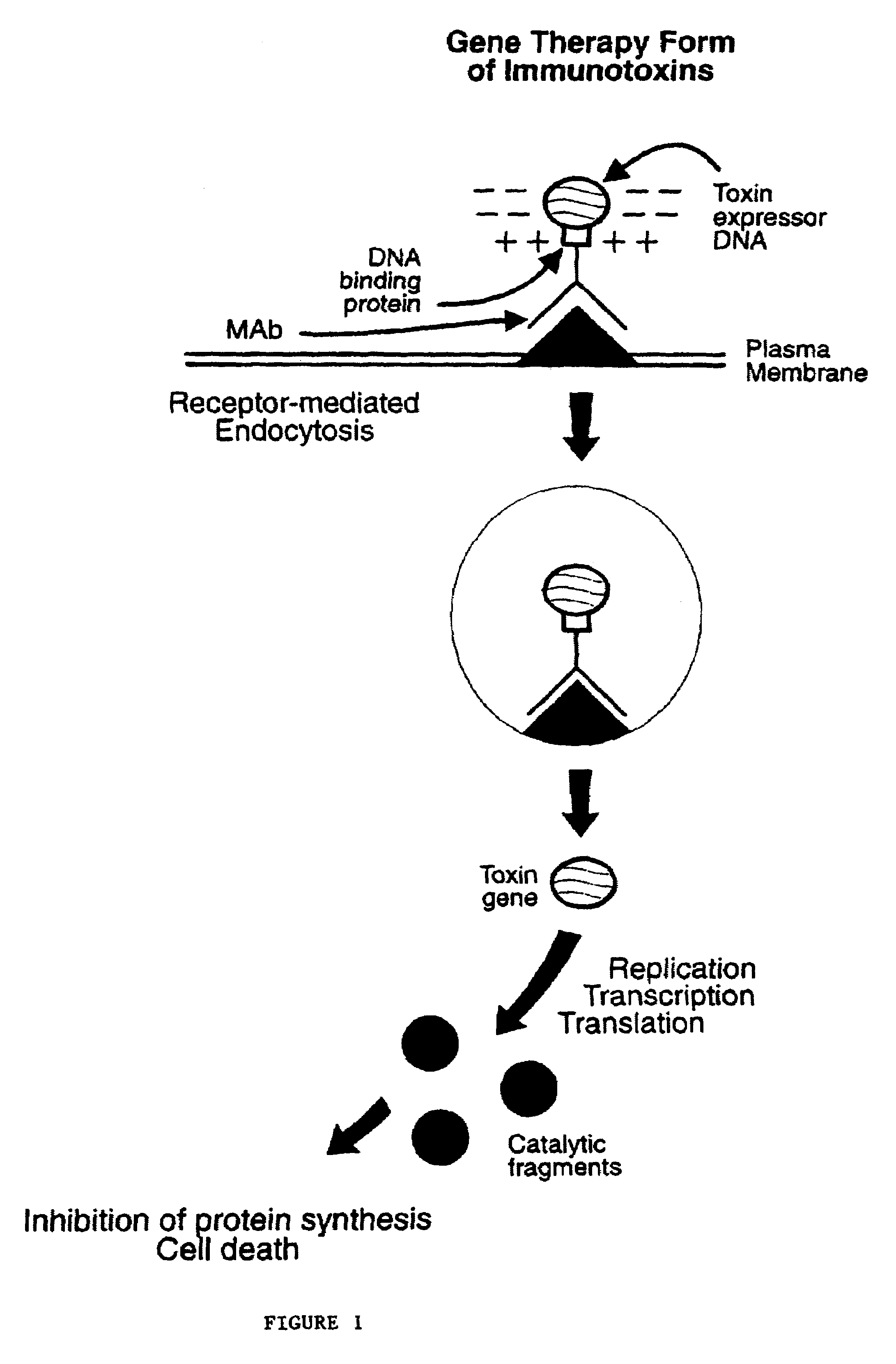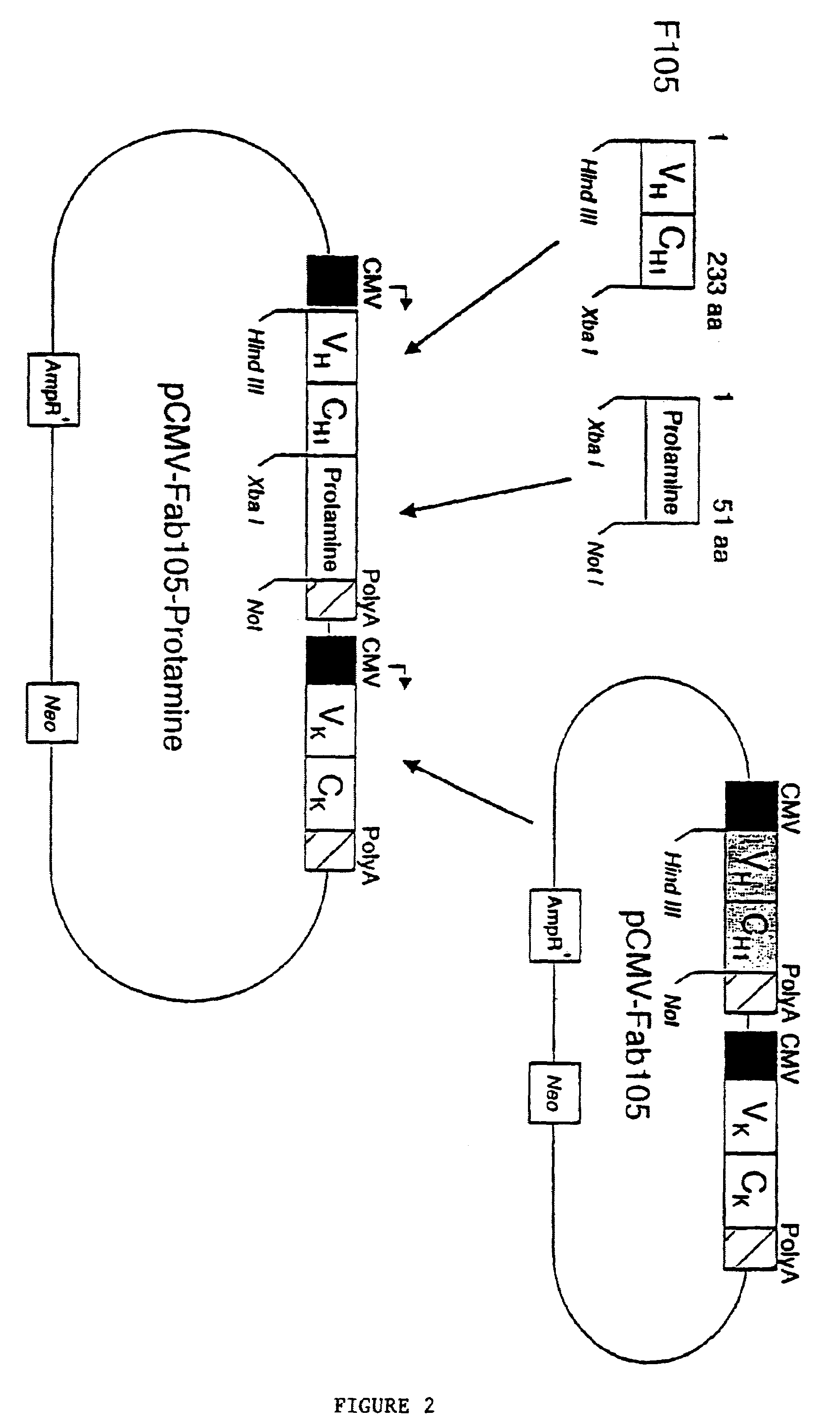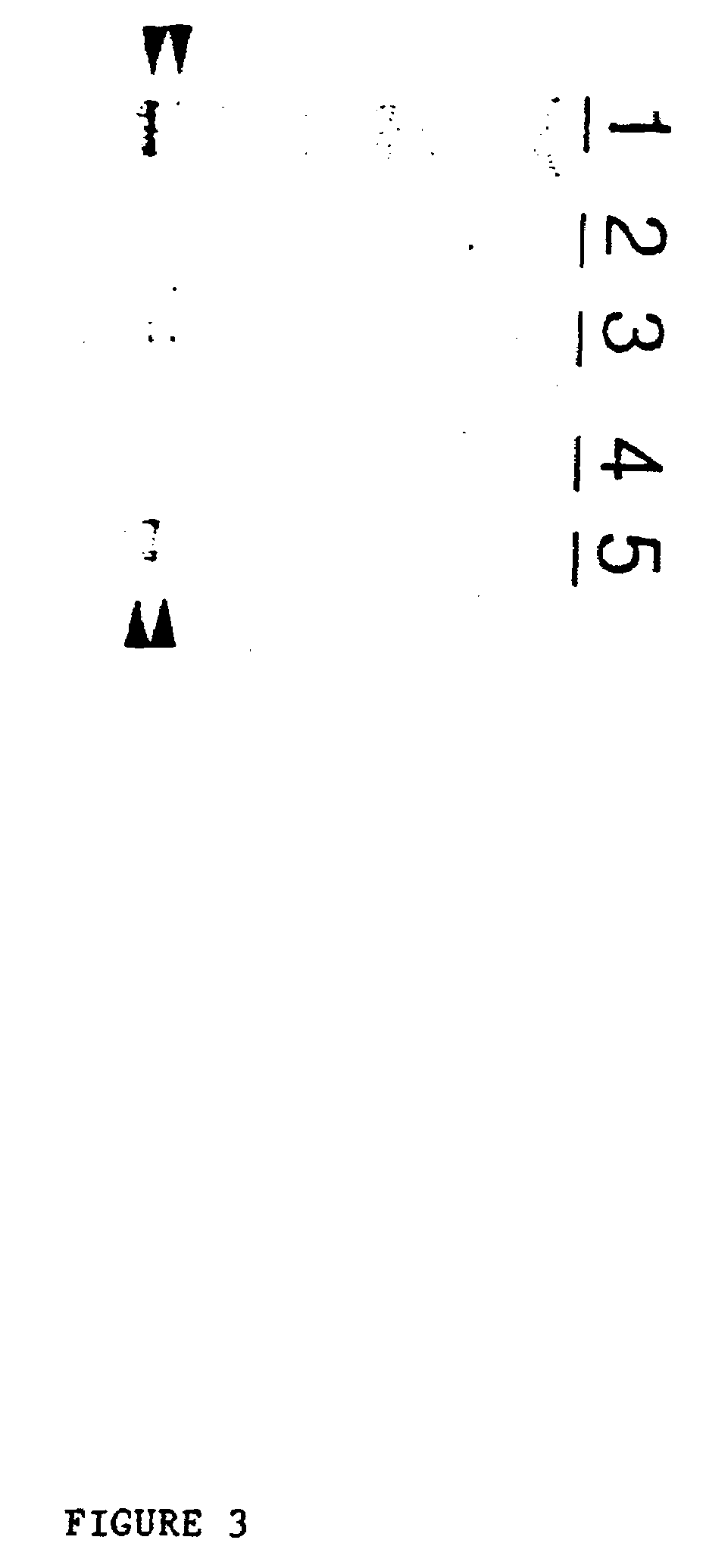Nucleic acid delivery system, methods of synthesis and use thereof
a delivery system and nucleic acid technology, applied in the field of gene therapy, can solve the problems of indiscriminate infecting many cell types, low efficiency of effective transduction of desired genes into desired target cells, limited infecting desired targeted cells, etc., and achieves high efficiency.
- Summary
- Abstract
- Description
- Claims
- Application Information
AI Technical Summary
Benefits of technology
Problems solved by technology
Method used
Image
Examples
examples
[0071]A bi-cistronic mammalian cell expression vector (pCMV-Fab105-Protamine) which contains a chimeric gene encoding the Fd of F105 fused to the human protamine protein in one expression cassette and the F105 kappa chain encoding gene in another expression cassette (FIG. 2) was constructed as follows.
[0072]Construction of Mammalian Expression Vector For Fab105-Protamine Fusion Protein
[0073]The pCMV-Fab105 plasmid was constructed as described below. This plasmid contains bi-cistronic expression cassettes for the Fd gene and kappa chain gene derived from F105 hybridonma. To construct a fusion protein expression vector, the Fd fragment of F105 without a stop codon was amplified by PCR using the pCMV-Fab105 as a template. The upstream primer (SEQ ID NO:2) (5′-TTTGAATTCAAGCTTACCATGGAACATCTGTGGTTC-3′) corresponding to the leader sequence of human immunoglobulin of amino acids 1 to 6 with an additional HindIII cloning site (Kabat, et al., 1987), and the downstream primer (SEQ ID NO:3) (5′...
PUM
| Property | Measurement | Unit |
|---|---|---|
| molecular weight | aaaaa | aaaaa |
| pH | aaaaa | aaaaa |
| concentrations | aaaaa | aaaaa |
Abstract
Description
Claims
Application Information
 Login to View More
Login to View More - R&D
- Intellectual Property
- Life Sciences
- Materials
- Tech Scout
- Unparalleled Data Quality
- Higher Quality Content
- 60% Fewer Hallucinations
Browse by: Latest US Patents, China's latest patents, Technical Efficacy Thesaurus, Application Domain, Technology Topic, Popular Technical Reports.
© 2025 PatSnap. All rights reserved.Legal|Privacy policy|Modern Slavery Act Transparency Statement|Sitemap|About US| Contact US: help@patsnap.com



